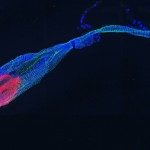Link to Pubmed [PMID] – 10517600
Microbiology (Reading, Engl.) 1999 Sep;145 ( Pt 9):2477-84
Cholera remains an important public health problem in many parts of the world and the availability of an effective cholera vaccine is important for the prevention of cholera in the countries affected by this disease. Despite the appearance in 1992 of a new serogroup, 0139, of Vibrio cholerae, most of the cholera outbreaks are still caused by V. cholerae O1 biotype El Tor. Vaccine trials in Asia from 1968 to 1971, and studies of the production of serotype-specific antiserum in rabbits and of the protective activity of monoclonal antibodies against diarrhoeal disease in neonatal mice, have led to the conclusion that the Ogawa serotype contains a specific antigenic determinant whereas the Inaba serotype contains a different antigenic determinant that cross-reacts with the Ogawa serotype. By studying the binding of anti-Ogawa monoclonal antibodies to synthetic oligosaccharide fragments mimicking the Ogawa O-specific polysaccharide, it has been shown that the terminal monosaccharide, bearing the 2-O-methyl group in the O-specific polysaccharide, is most probably the serotype-specific determinant for the Ogawa strain. However, study of the binding of a monoclonal antibody recognizing both Ogawa and Inaba serotypes suggested partial recognition of the core as well as of the O-specific polysaccharide of the LPS of V. cholerae O1. To further characterize this antigenic determinant that is common to the Ogawa and Inaba serotypes, the core and the O-specific polysaccharide linked to the core of V. cholerae O1 LPS were purified by preparative electrophoresis. The O-specific polysaccharide linked to the core was subjected to periodate oxidation to destroy sugars from the core. Binding studies of these purified saccharide fragments to a monoclonal antibody which is protective in mice and specific to the antigenic determinant common to Ogawa and Inaba serotypes showed that both the core and the O-specific polysaccharide are involved in this common antigenic determinant. This explains how the presence or the absence of the Ogawa-specific antigenic determinant would lead to the expression of two independent antigenic determinants of V. cholerae O1, one specific to the Ogawa serotype and the other common to both Ogawa and Inaba serotypes.

